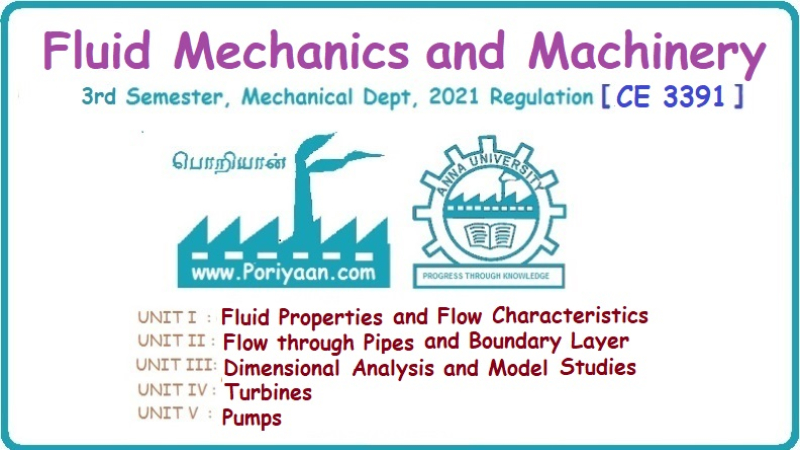Fluid Mechanics and Machinery: Unit 3: Dimensional Analysis and Model Studies
Model Analysis
Objectives, Advantages, Applications, Examples | Fluid Mechanics
The study of models of actual machines (or) structures are called model analysis.
MODEL ANALYSIS Hydraulic structure like dams, spill ways, canals, weirs and fluid flow machines (or) Hydraulic machines like turbines, ships, centrifugal pump, air planes designed and constructed (or) manufactured requires much time, money and energy. In case of any failure occurs in the actual structures (or) machines after the construction more loss in all respect. So predicting the performance of the hydraulic structures (or) hydraulic machines before actually constructing (or) manufacturing is very important. The study of models of actual machines (or) structures are called model analysis. The model analysis is actually experimental method for finding solution of flow problems, prototype and model. The actual structures (or) machines are called prototype. Prototype is the full size structure employed in the actual engineering design. The prototype operates under the actual working conditions. The model is the small scale replica of the actual structure (or) machine. The model which is geometrically similar to its prototype is known as undistorted models. A model which is not geometrically similar to its prototype is known as distorted models. Experimental observations made on a model bear a definite relationship to the prototype. Model a mechanical analog of the prototype is generally a small scale replica of the prototype. Model may be even larger (or) the same size as prototype depending upon the need and purpose. (i) To estimate the flow capacity and calibration of the various flow passages. (ii) To find out the pressure distribution and the resulting forces on the system and its components. (iii) To as certain the overall performance of a hydraulic machines. (iv) To Study the geometric factors and relative proportions of the system. (v) To minimize the cost and maximize the utilization of machines (or) structures. (i) The performance of the hydraulic structure (or) machines can be easily predicated. (ii) With the help of dimensional analysis a relationship between the variables influencing is flow problem in terms of dimensionless parameters is obtained. (iii) The merits of alternative design can be predicted with the help of testing. (iv) It is decreases the actual changes costs of the machines. (v) It is defect and rectify the defect of an existing structure (or) machines. (i) Civil engineering structures such as dams, canals, bridge etc., (ii) Design of harbour, ships and submarines. (iii) Aeronautical engineering model tests on a aeroplanes rockets and missiles in the wind tunnels. (iv) Naval engineering model tests on ships and submarines in the towing basins. (v) Mechanical engineering model tests an mechanical engineering equipment such as pumps, compressors, and turbines to find the performance of actual units. 1. Objectives of Model Analysis:
2. Advantages of Model Analysis:
3. Applications of Model Analysis:
Fluid Mechanics and Machinery: Unit 3: Dimensional Analysis and Model Studies : Tag: : Objectives, Advantages, Applications, Examples | Fluid Mechanics - Model Analysis
Related Topics
Related Subjects
Fluid Mechanics and Machinery
CE3391 3rd semester Mechanical Dept | 2021 Regulation | 3rd Semester Mechanical Dept 2021 Regulation
